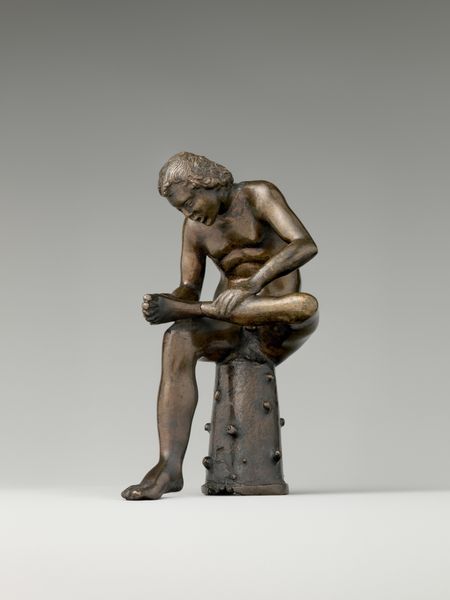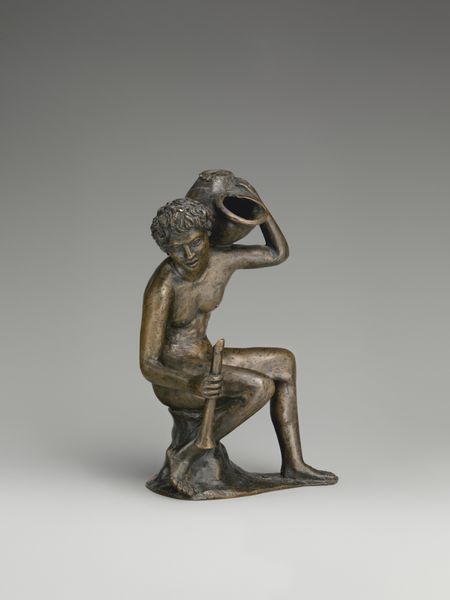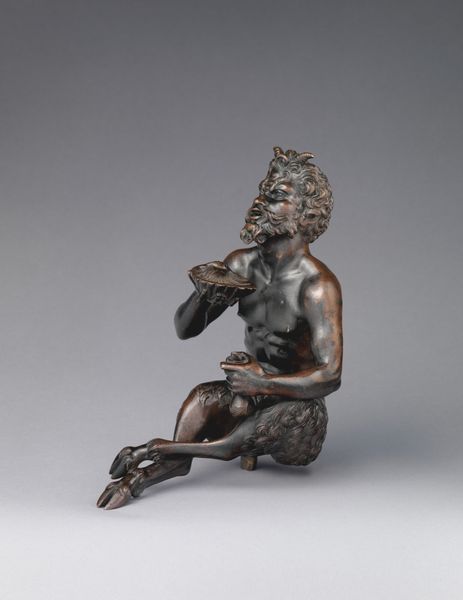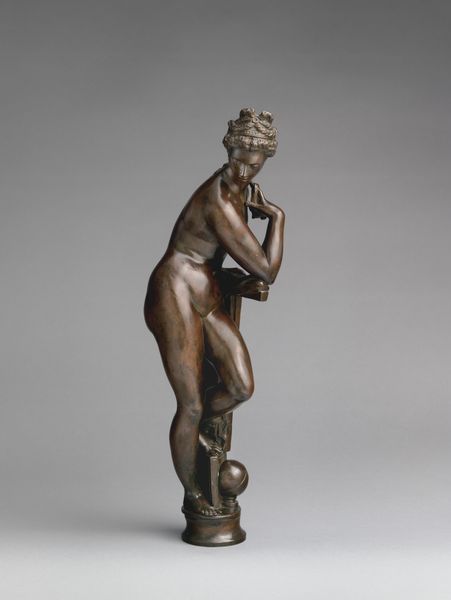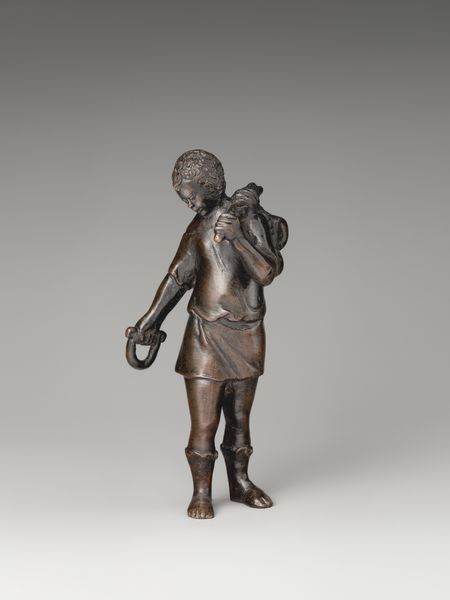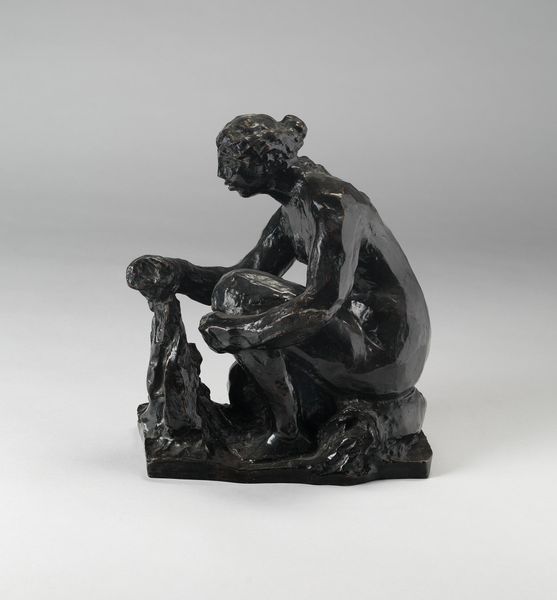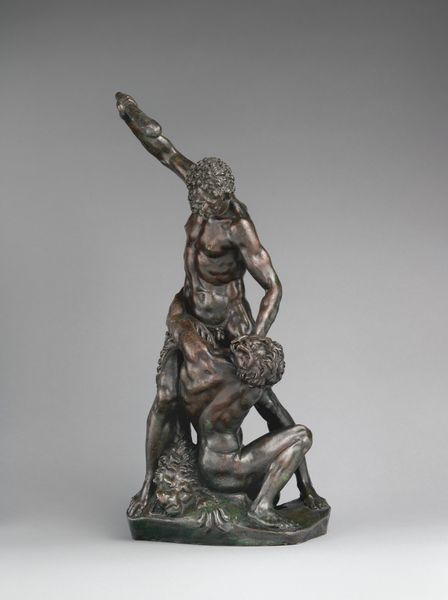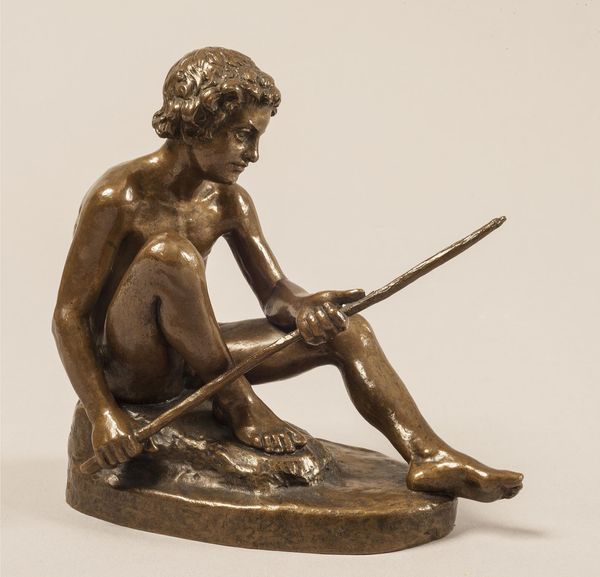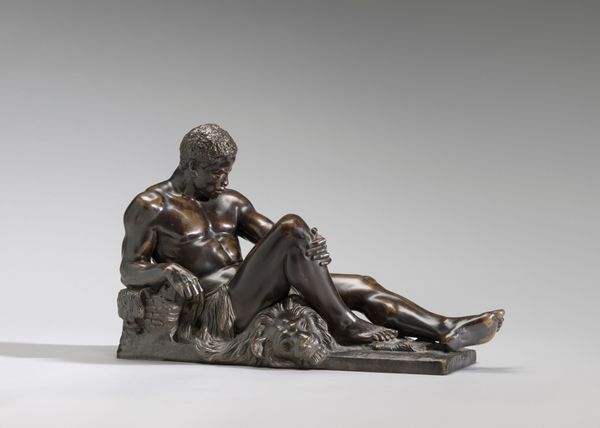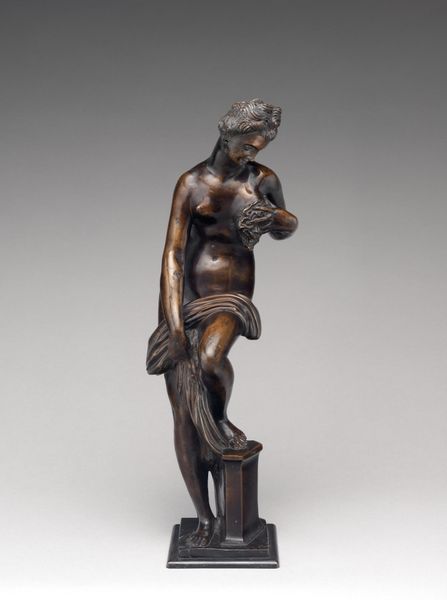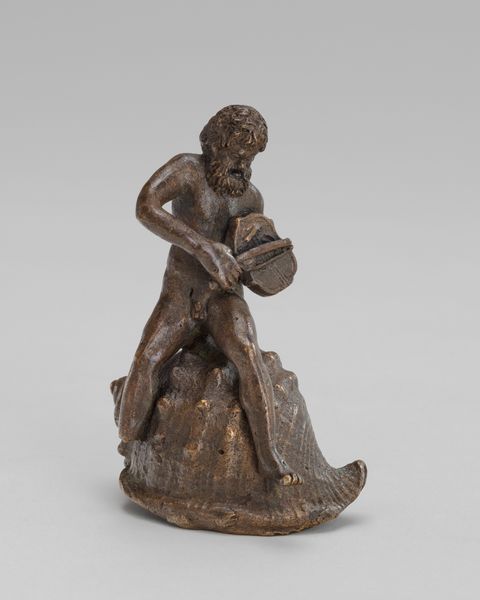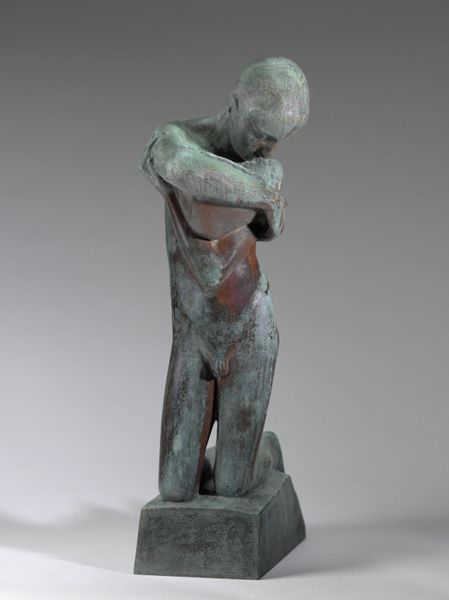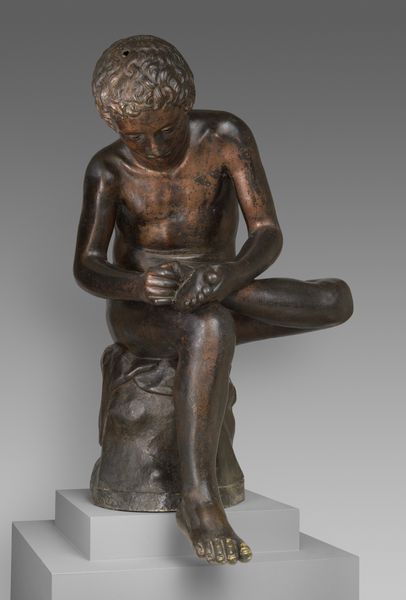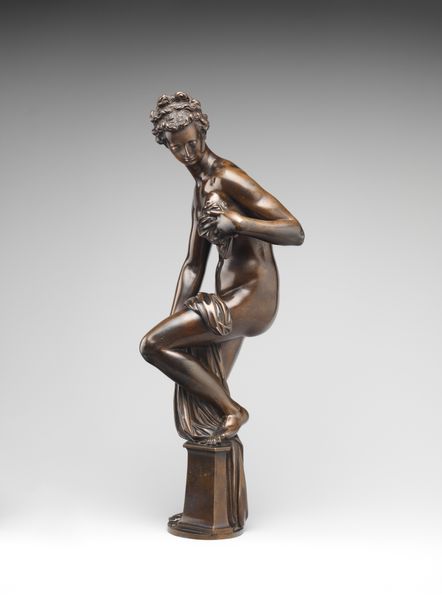
Spinario (boy pulling a thorn from his foot) 1500 - 1555
0:00
0:00
bronze, sculpture
#
3d sculpting
#
natural shape and form
#
sculpture
#
product design sketch
#
boy
#
bronze
#
3d character model
#
sculptural image
#
unrealistic statue
#
character sketch
#
sculpture
#
figure sketch
#
decorative-art
#
3d character modeling
Dimensions: Overall figure (confirmed): 6 3/4 × 3 3/4 × 4 in. (17.1 × 9.5 × 10.2 cm)
Copyright: Public Domain
Curator: Ah, a quiet scene. It reminds me of slow afternoons, of finding solace in small acts of self-care. Editor: Indeed. What we have here is "Spinario," also known as "Boy Pulling a Thorn from His Foot." This bronze sculpture is attributed to Severo Calzetta da Ravenna and dates to around 1500-1555. You can find it here at the Metropolitan Museum. Curator: There’s a peculiar tension between the timeless bronze and this very intimate, relatable human moment. Almost everyone knows what it feels like to pluck out a splinter. Did this function as decorative art or did it speak to a larger commentary on ancient values? Editor: Certainly both. Consider the work's Neoplatonic elements; its decorative nature integrates both aesthetic appeal and deeper philosophical ideas relating to humanism. Ravenna’s technical brilliance allowed him to invest this boy with palpable weight and realism even in miniature. The smooth surfaces juxtaposed against the intricate detail of the hair, for example, demonstrates both balance and contrast. Curator: It strikes me that the posture is very careful, and a bit studied; there's an undeniable grace and poise to the figure despite the workaday context. Editor: Precisely! The boy’s contrapposto posture evokes classical sculpture, further imbuing the scene with dignity and balance. One might consider its inherent structural paradox as well: the tree stump as foundation and seat creates a compelling interplay of the organic and the artificial. It makes the boy a statue and mortal simultaneously. Curator: So, in effect, it transcends the simple narrative of discomfort. This isn't just about a thorn. Editor: Agreed. "Spinario" elevates the mundane, prompting a meditation on humanity, endurance, and artifice. By transforming this trivial action into the extraordinary, Ravenna urges us to find the divine within everyday experience. It makes one ponder. Curator: Absolutely! Thinking about Spinario leaves me wanting to re-examine moments I take for granted. There’s poetry everywhere. Editor: I concur. It challenges assumptions about form and content within early Renaissance sculpture and decorative arts as a whole, offering ample opportunity for aesthetic and philosophical contemplation.
Comments
No comments
Be the first to comment and join the conversation on the ultimate creative platform.
